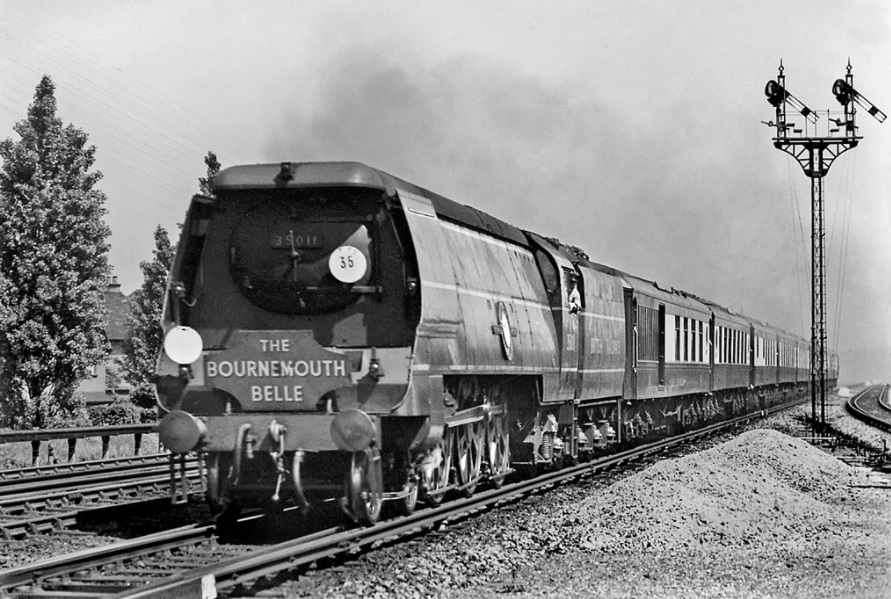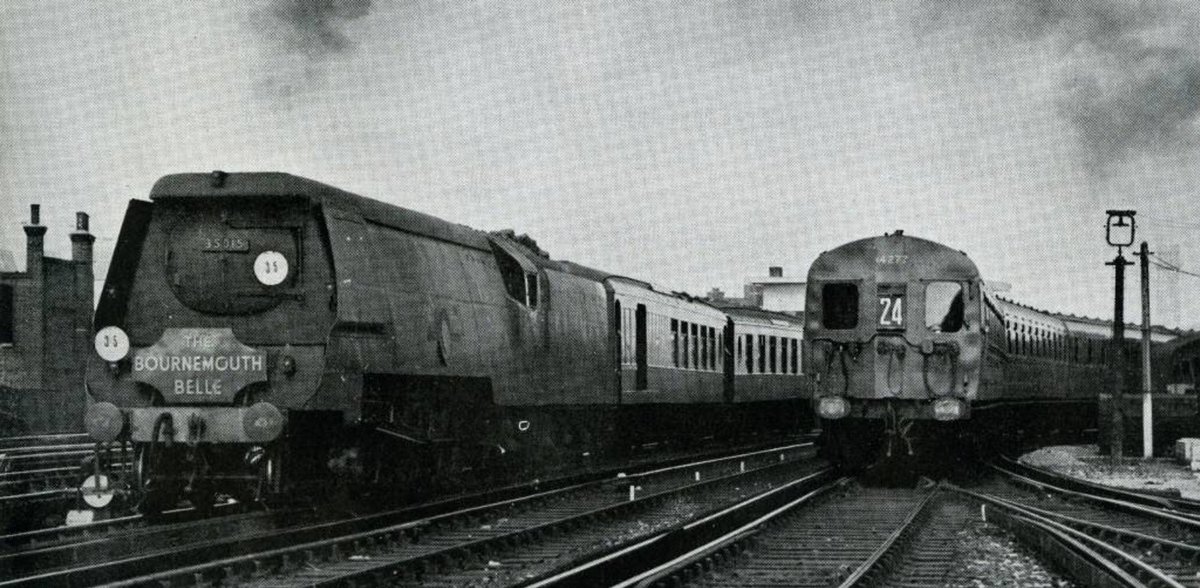
#OnThisDay in 1926, the first Atlantic Coast Express ran between London Waterloo and the West Country. Originally named the ”North Cornwall & Bude Express” the service ran from 1907, until, as part of a publicity drive by Southern Railways, the 11 o’clock from Waterloo to the West Country was named the “Atlantic Coast Express” in July 1926. The new name was chosen as the result of a competition run in the staff magazine and the winning entry was submitted by Mr F. Rowland, a guard from Woking who won a prize of three guineas for suggesting Atlantic Coast Express. He was soon to move to Great Torrington in North Devon; he was killed in a shunting accident there six years later. The “Atlantic Coast Express’ very soon became affectionately known to many travellers and enthusiasts as the “ACE”, the shortened version of its full title.
The route was always heavily reliant on holiday passengers which meant that the volume of traffic was very seasonal. On Summer Saturdays, the ACE consisted of up to five trains departing from Waterloo in the 40 minutes before 11:00, stretching resources on the long single-track branch lines to the limit. In the winter timetable, one train was sufficient for all of the branches, and stops were made at all but the most insignificant stations west of Exeter. Significant delays were frequent at the junctions, as coaches were detached or attached and shunted between the various sections of the train, belying the name of “Express”.
In later years, a carriage was detached at Salisbury to join a following stopping train along the main line, and two carriages were detached at Sidmouth Junction, one for Sidmouth and one for Exmouth via Budleigh Salterton. The restaurant and buffet cars were normally removed during the major division at Exeter Central.

Saturdays were always the busiest and in August 1939 the ACE was shown in Bradshaw’s Guide as five separate trains departing from Waterloo; serving Ilfracombe (10:36), Padstow (10:40), Ilfracombe again (10:47), Bude (10:54) and a final departure at 11.00 with portions for Padstow Bude and Plymouth.
Services continued in much the same pattern until the outbreak of World War II, which necessitated longer trains and substantial deceleration on all lines, rendering named trains no longer appropriate.
Putting Funds into the Frames
We have therefore set up a Fund for the Frames that will be essential for the successful restoration of 35011 back into her original condition. Not only do we need to clean and review the condition of the frames as they exist today, any corroded sections of the framework, the rear platform and dragbox will cut out and replaced. We also need to reverse some of the areas that were changed during rebuilding to allow a new middle cylinder to be installed and reinstate Bulleid’s unique patented chain driven valve gear.
This a general fund with no minimum / maximum donation or number of contribution limits, all monies donated to the Fund for the Frames will be specifically ring fenced for the frames. If you are able to contribute to this project in any way however great or small, we thank you for your support.




 It was at this time that General Steam Navigation was re-numbered from 21c11 to 35011. When Oliver Bulleid built his new engines he adopted a new numbering scheme for all his locomotives based on Continental practice. The Southern Railway numbers followed an adaptation of the UIC classification system of using letters and numbers to designate the powered and unpowered axles, together with a running number. This first appeared on Bulleids Q1 class of engine where “C” refers to the number of coupled driving axles – in the Q1s case three. All these locomotives therefore carried numbers which started “C” followed by the individual identifier from C1 to C40. The first Merchant Navy built Channel Packet a pacific class 4-6-2 locomotive became 21C1 – where “2” and “1” refer to the number of unpowered leading and trailing axles respectively, and “C” again referring to the number of driving axles, in the Merchant Navys case three followed by the individual identifier. The remainder were numbered 21C2-21C20. The scheme was abandoned by British Railways in 1948 and the existing locomotives were renumbered under the British Railways standard system in the series 35001-35020; the final batch appeared in traffic as 35021-35030.
It was at this time that General Steam Navigation was re-numbered from 21c11 to 35011. When Oliver Bulleid built his new engines he adopted a new numbering scheme for all his locomotives based on Continental practice. The Southern Railway numbers followed an adaptation of the UIC classification system of using letters and numbers to designate the powered and unpowered axles, together with a running number. This first appeared on Bulleids Q1 class of engine where “C” refers to the number of coupled driving axles – in the Q1s case three. All these locomotives therefore carried numbers which started “C” followed by the individual identifier from C1 to C40. The first Merchant Navy built Channel Packet a pacific class 4-6-2 locomotive became 21C1 – where “2” and “1” refer to the number of unpowered leading and trailing axles respectively, and “C” again referring to the number of driving axles, in the Merchant Navys case three followed by the individual identifier. The remainder were numbered 21C2-21C20. The scheme was abandoned by British Railways in 1948 and the existing locomotives were renumbered under the British Railways standard system in the series 35001-35020; the final batch appeared in traffic as 35021-35030.








 This is your chance to be part of an exclusive club and aid the overall restoration of General Steam Navigation by becoming a Trailing Truck Transformer.
This is your chance to be part of an exclusive club and aid the overall restoration of General Steam Navigation by becoming a Trailing Truck Transformer.